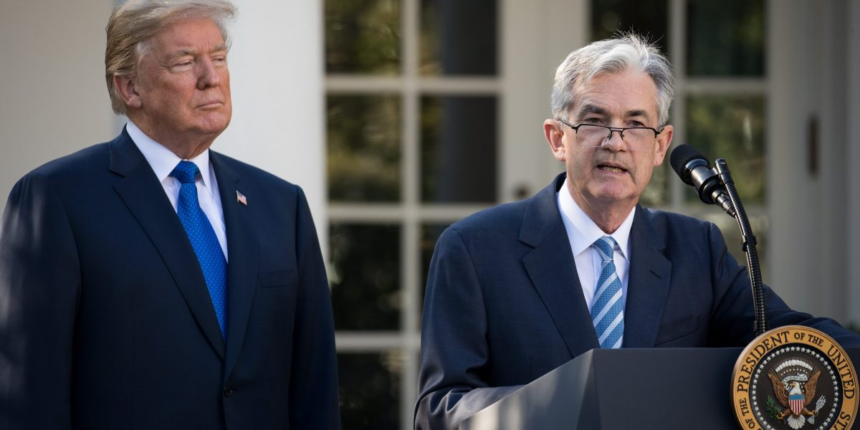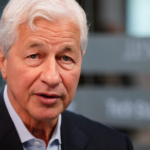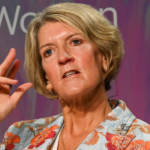In 12 months’ time a different hand will be guiding the Federal Reserve. Chair Jerome Powell is due to stand down in May of next year. Different—not new—because some of the candidates President Trump may be eyeing for nomination are already well-known figures in regional and central banking.
This week Trump has also dropped another crumb for spectators: Treasury Secretary Scott Bessent won’t be moving over to the Fed.
With Bessent removing himself from contention, Trump confirmed he now has four names in mind as potential successors to lead the Federal Open Market Committee (FOMC). The Oval Office has also made at least one of the criteria clear: The next Fed chairman must be more willing to cut rates.
A former member of the Board of Governors at the Fed, Warsh has been seen as a front-runner for Fed chairman since President Trump took office. Warsh served on the board from 2006 to 2011, acting as administrative governor, managing and overseeing the group’s operations, personnel, and financial performance.
Trump has already talked warmly of Warsh, telling reporters on Air Force One last month that Warsh is “very highly thought of.”
Warsh, currently a visiting fellow in economics at the Hoover Institution and a lecturer at the Stanford Graduate School of Business, is bullish on the American economy and has supported calls that Trump 2.0 could usher in a golden era for the nation.
“What I’d be worried about is a central bank that doesn’t see any of that. A central bank that is stuck with models from 1978, governance from a prior period, and [doesn’t] recognize we could be at the front end of a productivity boom,” Warsh said. “If I were the president, I’d be worried that [the Fed] might not see it, and they might think economic growth is somehow going to be inflationary.”
For many years, Warsh has also called for a “regime change” at the Fed, and argued: “It’s not just about a person, it’s about an approach to economics … I’m troubled when I see them moving the goalposts. It is very puzzling to me, how you could think that we should do an emergency rate just last September, and now all of a sudden you stand there like a hawk. That’s not good for the institution, I don’t think it’s good for the economy to be changing the goalposts like that.”
To this end, wrote ING in a note to clients this morning, “Warsh stands out as the most USD-friendly candidate at this stage … We could see the dollar gain support on his nomination.”
Warsh isn’t the only Kevin in contention, Trump revealed. Yesterday he said: “Both Kevins are very good, and there are other people that are very good, too.”
This very fact may prove to be the reason Trump steers away from nominating Hassett: It may raise questions about the independence of the Fed.
Despite wanting a friendly face as head of the FOMC, the White House will be mindful of the fact that the autonomy of the central bank is a fundamental strength of the economy. Trump already learned the hard way how markets react to perceived threats against this independence: He was forced to walk back a threat to fire Powell after the markets revolted.
In a note overnight, Goldman Sachs suggested that further hints about the next chairman could come in the form of a replacement for Fed Governor Adriana Kugler, who resigned last week. Chief U.S. economist, Jan Hatzius, wrote: “If confirmed very quickly, the new governor might be able to participate in the Sept. 16–17 FOMC meeting. This would likely add further support for rate cuts following last week’s two dissents in favor of cuts from Governor Waller and Vice Chair for Supervision Bowman.
“The choice is particularly important because the new governor could well take over leadership of the FOMC from Chair Powell.”
Governor Waller was a nomination of President Trump’s in 2020, in a term ending in 2030, already marking him as an individual who has earned the notice and respect of the current White House.
But in more recent months, Waller has raised eyebrows as potentially auditioning for the role of Fed chairman. Notably, he was one of two members who dissented against the recent FOMC decision not to cut the base rate from its current level of 4.25% to 4.5%.
As UBS’s Paul Donovan wrote late last week: “Investors are bound to suspect that the rationale amounted to little more than an excited jumping up and down and shouting: ‘Pick me, pick me’ in the general direction of the White House.”
Elsewhere President Trump could look to FOMC member Michelle Bowman as a potential candidate, for she too dissented against the Fed’s decision to hold rates.
Bowman, vice chair for supervision at the Fed, justified her stance with: “Inflation has moved considerably closer to our target, after excluding temporary effects from tariffs, and the labor market remains near full employment. With economic growth slowing this year and signs of a less dynamic labor market, I saw it as appropriate to begin gradually moving our moderately restrictive policy stance toward a neutral setting.
“In my view, this action would have proactively hedged against a further weakening in the economy and the risk of damage to the labor market.”
And more widely, economist Judy Shelton’s name has also been floated. Shelton was, after all, a Trump nomination to the Fed during his first term but did not receive congressional backing to make it to the board.









